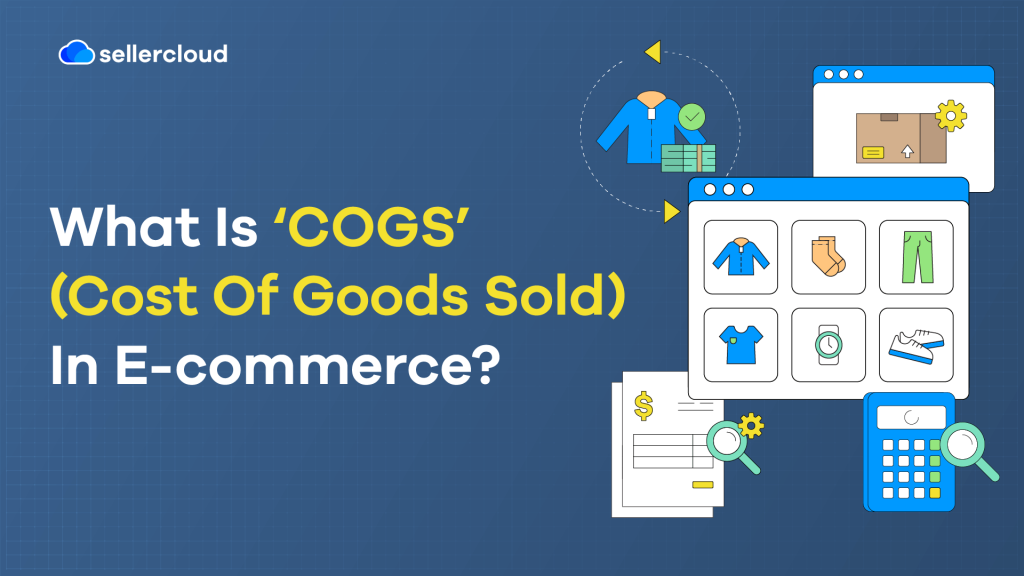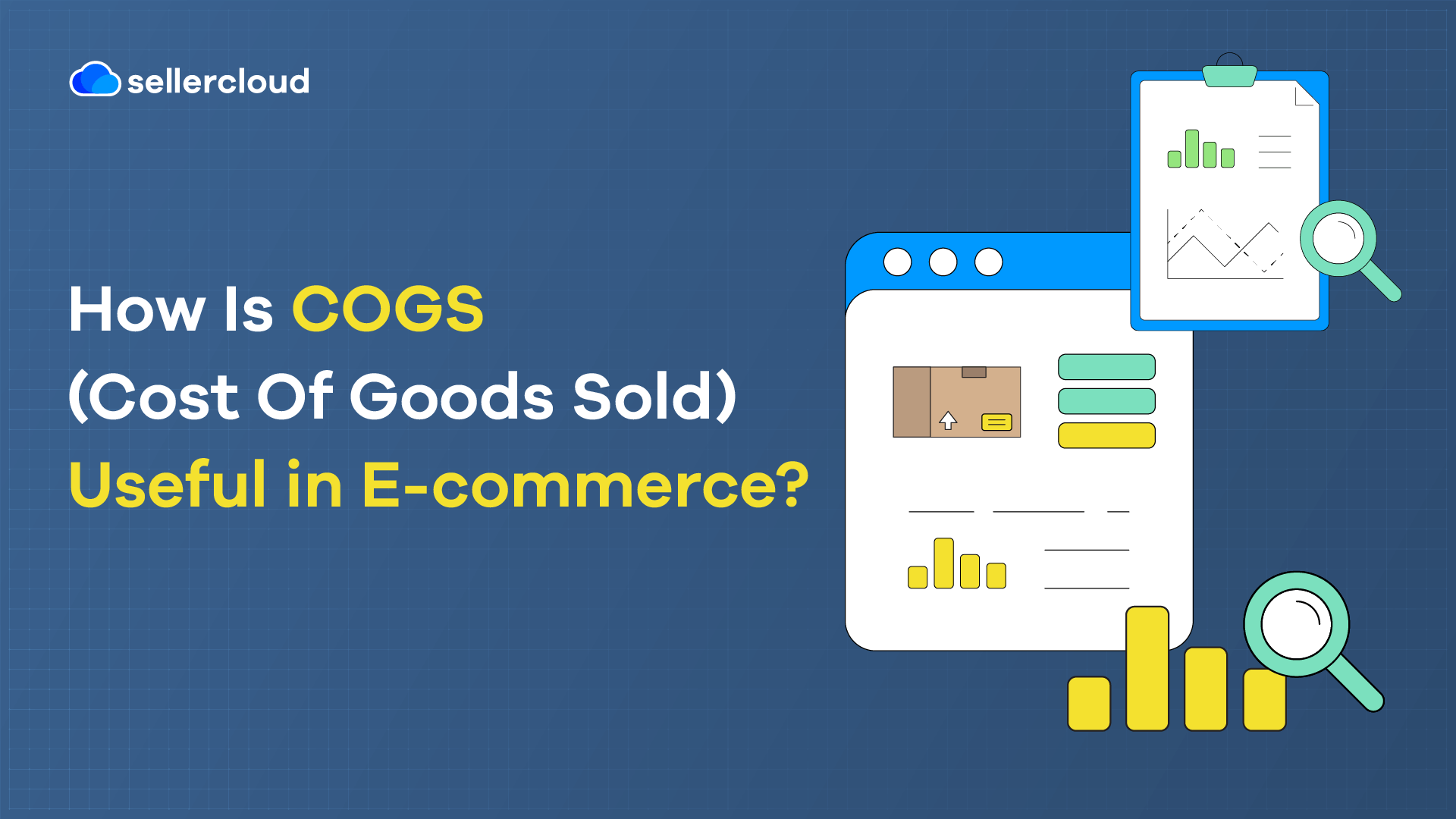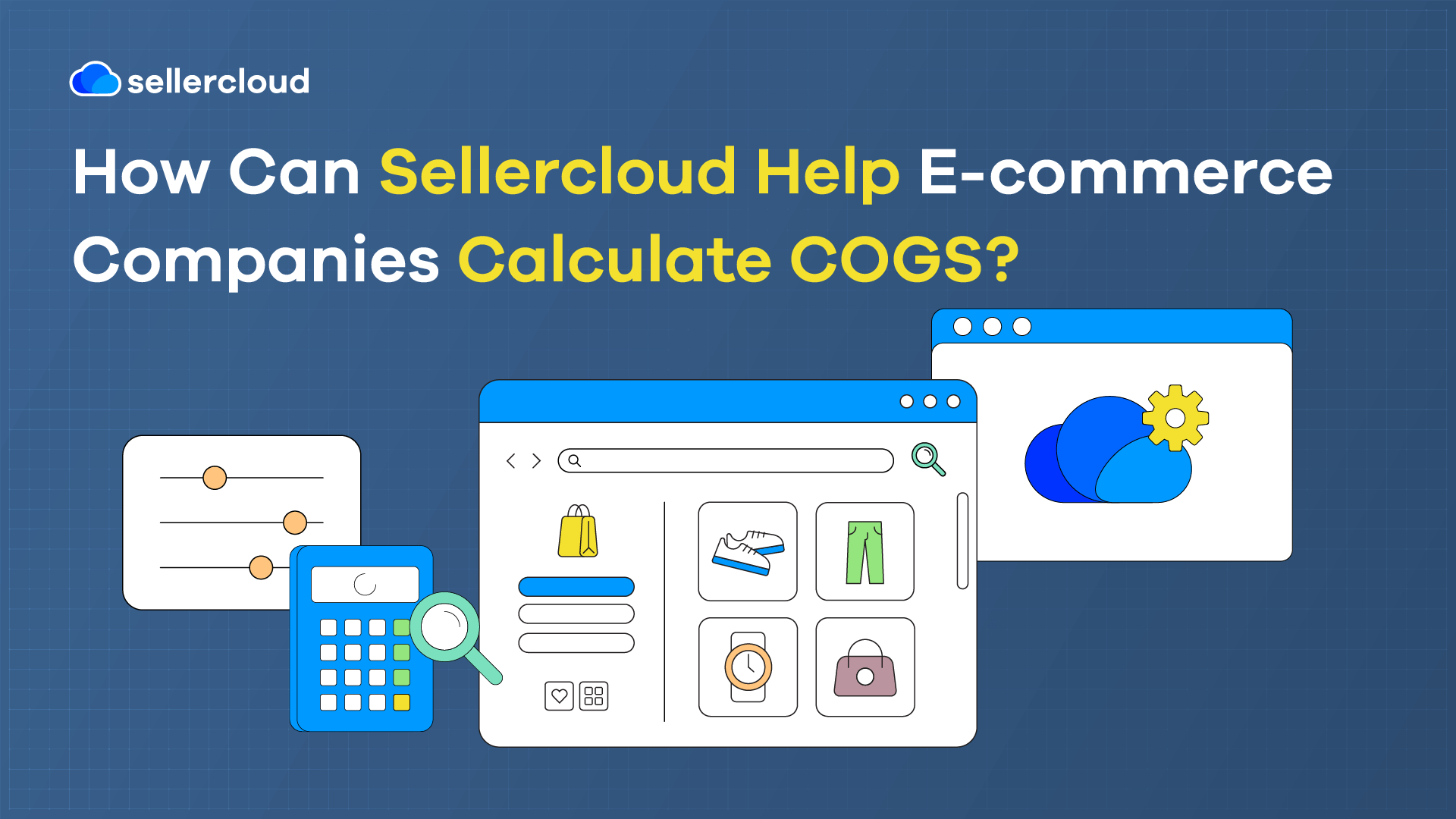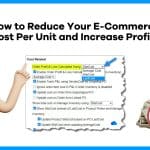
- COGS is useful because it helps businesses determine their pricing strategy and calculate their profitability by deducting it from their revenue.
- Descartes Sellercloud can help calculate COGS and various other expenses that ecommerce businesses must manage.
The success of a business depends on its ability to manage its costs. Depending on what you are trying to achieve, there are various ways to manage costs, including COGS.
COGS is valuable to calculate because it helps with two crucial areas of business operation: effective product pricing and profit calculation. If you don’t price products based on cost, you could be operating at a loss. Likewise, you could make poor financial decisions if you cannot calculate your profit.
In this article, we’ll explain what COGS is, why COGS is useful, and how you might calculate COGS.
Bear in mind that this article is strictly about COGS in the context of ecommerce—not manufacturing!
What Does ‘COGS’ Mean?
COGS stands for ‘Cost Of Goods Sold.’ For sellers, COGS is the product cost on the PO (purchase order) and is used when receiving orders. It’s important to point out that manufacturers also use the term COGS.
In a manufacturing context, COGS is the sum of the costs to produce a product—primarily labor and raw materials—and can sometimes be called ‘production costs.’ COGS is most useful for accounting purposes when calculating business costs. It can be recorded as a business expense and is important for tax purposes.
How Is COGS (Cost Of Goods Sold) Useful in Ecommerce?

COGS is an enormously useful metric that businesses can use to estimate their bottom line and monitor performance. When you subtract COGS from revenue, you get a company’s gross profit (the profit before paying out taxes, dividends, and fixed expenses).
Regularly monitoring COGS is advantageous as it can increase or decrease. Ideally, businesses should aim to keep them low. If COGS increases, it can be due to rising costs, misallocated expenses, company inefficiencies, or poor pricing. This can result in slimmer margins and a decreasing net profit—you could even be operating at a loss.
If you don’t check COGS regularly, you will miss opportunities to save on costs. Regularly tracking COGS enables businesses to react immediately and work toward reducing them. For example, businesses can identify trends and check how COGS have changed since the previous month, quarter, and year-to-date.
It is also important to note that some businesses can accidentally misattribute fixed expenses to COGS, leading them to conclude they are spending too much and make unnecessary reductions. Conversely, they may think they are spending a good amount when they are actually spending more than they think, which could reduce their profits.
How Do You Calculate COGS (Cost Of Goods Sold) in Ecommerce?
It’s crucial to point out that different ecommerce businesses calculate COGS differently. COGS can include different things based on your expenses and how you do business. How a business calculates COGS depends on various factors, such as its industry. Because of this, some businesses might not have the same expenses.
If you’re manufacturing goods, COGS will factor in the following:
- Labor—The cost of labor to manufacture goods.
- Materials—The cost of the materials purchased to manufacture goods.
- Utility costs associated with a product’s creation, such as power and water, if applicable, are also included in COGS.
However, as an ecommerce reseller who purchases ready-made goods, you should not include costs for materials and the construction of goods. Your business may even import products from overseas, and you may technically be using landed cost, which includes all the costs associated with importing products, as COGS.
None of these methods are wrong; it’s just what works for your business. Remember, COGS originated from the manufacturing industry and is not a perfect accounting method for ecommerce. Furthermore, determining COGS can be tricky depending on the business model, particularly when expenses overlap in different parts of the business.
However, it is generally accepted that costs incurred under OPEX (Operating Expenses) and SG&A (Selling, General, and Administrative expenses) are not included in COGS. Again, though, your business may think differently.
How Can Descartes Sellercloud Help Ecommerce Companies Calculate COGS?

As the top multichannel growth platform, Descartes Sellercloud offers many ways to calculate COGS, and it can be flexible to work how you need it to. Typically, the average cost methods are the most practical, and calculating COGS this way is the best practice. However, as mentioned above, your business may already use a particular method to calculate COGS.
Calculating Average Cost with Descartes Sellercloud
The two best ways to calculate average cost with Descartes Sellercloud are weighted average cost and simple average cost.
Here is a quick example of how to calculate weighted average cost:
- You receive a PO of 10 units at $2 per unit ($20 in total).
- You receive a PO of 20 units at $3 per unit ($60 in total).
The weighted average cost is the total item cost ($20 + $60 = $80) divided by all received units (10 + 20 = 30), which is $2.67 ($80 ÷ 30).
It’s also important to note that the time frame is important for calculating COGS. The point of COGS is knowing how much you spent on goods in a given period, whichever way you calculate it.
Here’s how to calculate a simple average cost:
- You receive a PO of 10 units at $2 per unit.
- You receive a PO of 20 units at $3 per unit.
The Simple Average Cost is the average of $2 and $3, which is $2.50.
You can read more about product average costs with Descartes Sellercloud here.
Ways to Manage Price with Descartes Sellercloud
Descartes Sellercloud is an excellent way to manage product prices across all your marketplaces. When you price your products in Descartes Sellercloud, the price is instantaneously updated on all marketplaces. You can also use a third-party repricer, such as Feedvisor, which can take the cost from Descartes Sellercloud and determine the ideal price for the marketplace.
Another option is using the custom price calculation feature instead of a repricer. In this case, Descartes Sellercloud builds a custom pricing calculation plugin for calculating COGS. Furthermore, if a business has very specific rules for calculating costs, Descartes Sellercloud can build it for them.
With Descartes Sellercloud, you can request custom price calculations for:
- eBay.
- Amazon.
- Newegg.
- Sears.
- Overstock.
- Wayfair.
- UnbeatableSale.
- Magento.
- Walmart.
- And many other marketplaces.
You can also calculate a lot more than just COGS with Descartes Sellercloud. You can also calculate landed costs and a wide range of other costs that you need to know to calculate your profitability.
Furthermore, you can calculate many of the individual expenses related to calculating COGS, drill down into them, and find ways to improve your bottom line.
Want to learn more? Book a demo today to see what Descartes Sellercloud can do for your business.
Key Points
Now you know all there is to know about COGS. Make sure you remember these key points.
- COGS stands for ‘Cost Of Goods Sold.’ It is used to determine product price and calculate profit by deducting the figure from revenue. It originates from manufacturing.
- In ecommerce, how you define COGS can vary depending on the business, your expenses, and your accounting experience. There’s no one-size-fits-all approach.
- You should monitor COGS regularly, as they can increase or decrease. Low COGS is better for profitability.
- Weighted average cost and simple average cost are two of the best ways to calculate COGS. However, you may prefer to use a different method instead.
- You can calculate COGS in multiple ways with Descartes Sellercloud, including repricers, custom calculations, and integrations.




